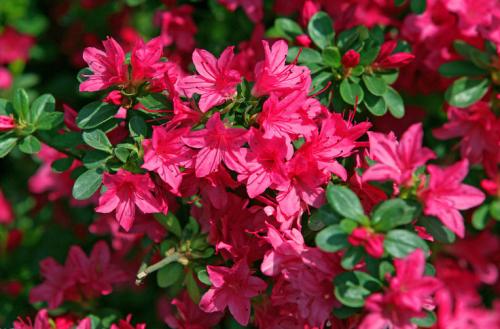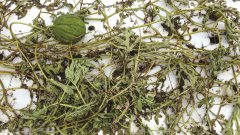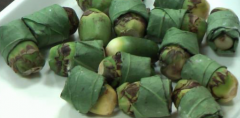What are the cultivation techniques of azaleas, cultivation methods and precautions of azaleas?
Rhododendron is a kind of flower plant that is very popular with the public. how to raise azaleas? What are the breeding methods and matters needing attention of rhododendron? Let's take a look.
Culture methods and matters needing attention of Rhododendron
Planting and transplanting: when planting azaleas, give it adequate protection from the wind and afternoon sunlight. Around the building, it is best planted on the east or north side. In the open area, it likes alternating sunshine and shadows. Don't plant azaleas in windy places.
Azaleas, if properly planted, can be successfully transplanted at any time of the year if they are watered and given special care to prevent drying and freezing. The ideal time to transplant these plants is in the dormant season, whether in autumn or early spring, when the temperature is cool and the soil is well hydrated. Grow azaleas or azaleas at the same depth as nurseries. The spacing will depend on the mature spread of the plant.

Soil: the soil should be well drained and rich in organic matter. If you have heavy clay in your yard, plant azaleas on an elevated bed or set up a drainage system to remove excess water. These plants will not tolerate alkaline (lime) conditions. Keep this in mind when planting lime, masonry, or cement around a new house that is often mixed with the surrounding soil. This may eventually lead to discoloration and death of plants.
The soil is treated into a good seedbed condition before planting. The addition of leaf mold, peat moss or other organic matter will help almost all soils. When planting, dig a root hole twice the size. Mix the dug soil with the soil improver and place enough improved soil at the bottom of the hole so that the top of the root ball is slightly higher than the surrounding soil. Fill the hole to the top and water it during filling to precipitate the soil and eliminate cavitation. Let the plant build itself in a new location before adding any fertilizer.
Fertilizers: avoid excessive use of lime or alkaline fertilizers around azaleas and azaleas. If necessary, apply nitrogen fertilizer or mixture (organic or inorganic) containing nitrogen, phosphorus and potassium immediately after spring flowering. Compared with chemical fertilizers, the relative advantages of organic fertilizers depend on whether the slow supply and infrequent application of organic fertilizers can justify the additional cost.
Depending on natural soil fertility, soil drainage, organic matter and fertilizer types, the amount of fertilizer used ranges from 2 to 5 pounds per 100 square feet. Trace elements such as magnesium and iron may not often be needed to add green to the leaves.

Water requirements: azaleas and azaleas have shallow fibrous roots, so they provide plenty of water in summer. If they are planted under wide eaves, water will be provided throughout the year. Keep in mind that although these plants need water, they do not thrive in wet, poorly ventilated soil.
Culture: because of the shallow roots of these plants, planting is kept to a minimum. Use mulch to control weeds, retain moisture, and provide a more uniform soil temperature. The mulch can be made of sawdust, bark dust, peat moss, straw or other organic materials. If these materials are mixed into the soil after being used as mulch, add some nitrogen to help the wood decompose.
Winter damage: winter damage may occur occasionally, usually due to lack of dormancy in plants during cold weather. To help develop winter cold resistance, avoid adding large amounts of nitrogen after July 15. Some factors that affect the ability of plants to resist low temperature are low temperature exposure time, cooling rate, plant dormancy, wind and sunshine exposure, overall plant status and plant varieties.
Pruning: if you select the appropriate new plant, taking into account the size of the mature plant and the space to be filled, a small amount of pruning is required. Remove dead and injured branches. If pruning is needed, prune the plant immediately after flowering to form flower buds in the following year. "Dead heading" is a pruning operation that includes the removal of flower clusters. It should be done once a year.
Spread: deciduous azaleas propagate commercially through seeds. Evergreen azaleas and azaleas take root quickly (6 to 8 weeks) from cork or semi-hardwood tip cuttings. Cuttings can be done at any time, but the cuttings from June to July seem to be the most suitable for rooting azaleas and A for rhododendrons, September cuttings seem to be the best. Make the cut 3 to 4 inches long, remove the lower blade, and place the end of the cut in the rooting medium. The same part of peat moss and clean building sand is an ideal rooting medium. After the root is formed, put the plant in a basin or reserve and keep it well watered.
Diseases: disease problems include leaf spot, rust, leaf gall and root rot. In all cases, appropriate identification must be carried out before effective control measures are recommended.
- Prev

What disease is the middle part of the stem of the flower blackened and wilted? What kind of medicine is better to treat black rot
People who grow cucurbitaceae plants know that this plant is prone to a disease of blackening in the middle of the flower stem and fruit rot, which is called fudge Fusarium wilt, also known as black rot. Geographical scope: in the world, but in the temperature of heavy rainfall
- Next

The price of betel nut in Taiwan has dropped. What is the price of betel nut in Taiwan now? what is the acreage of betel nut orchard?
Taiwan's betel nut orchard waste garden and conversion policy will be restarted this year, but only until December 31, qualified betel nut farmers can apply to the public office where the land is located. The subsidy for the abandoned garden is 150000 yuan per hectare, and the seedling fee ranges from 50 to 100000 yuan depending on the flat land or mountainous area.
Related
- A course of planting techniques and methods on how to grow carrots
- How to plant the latest tulips?
- Is it better to pick tea in the morning or in the afternoon? When is the best time for tea to be picked? what is the third or fifth tea?
- Launch Yuanxiao Happy combination Haocha + Tea Yuan healthy Taste
- Penghu Tourism "Fireworks 20 Parade with You"
- 2022 West Lake Happiness holds "Digital Revitalization Voucher" and draws iphone13 and laptop.
- Banqiao Fuzhou social houses are designed to change start-up combined with police elimination to create a safe and livable environment
- The convenient measure of "mechanical weeding" in Xinbei has been abused and the Agriculture Bureau has imposed heavy penalties on the illegal land consolidation.
- Changgeng University Joins Hands with Four Memory Factories to Rescue Memory Talent Shortage
- The list of Taiwan's top 100 MVP managers is listed by the Director-General of the Farmers' Association of Sanxia District.

